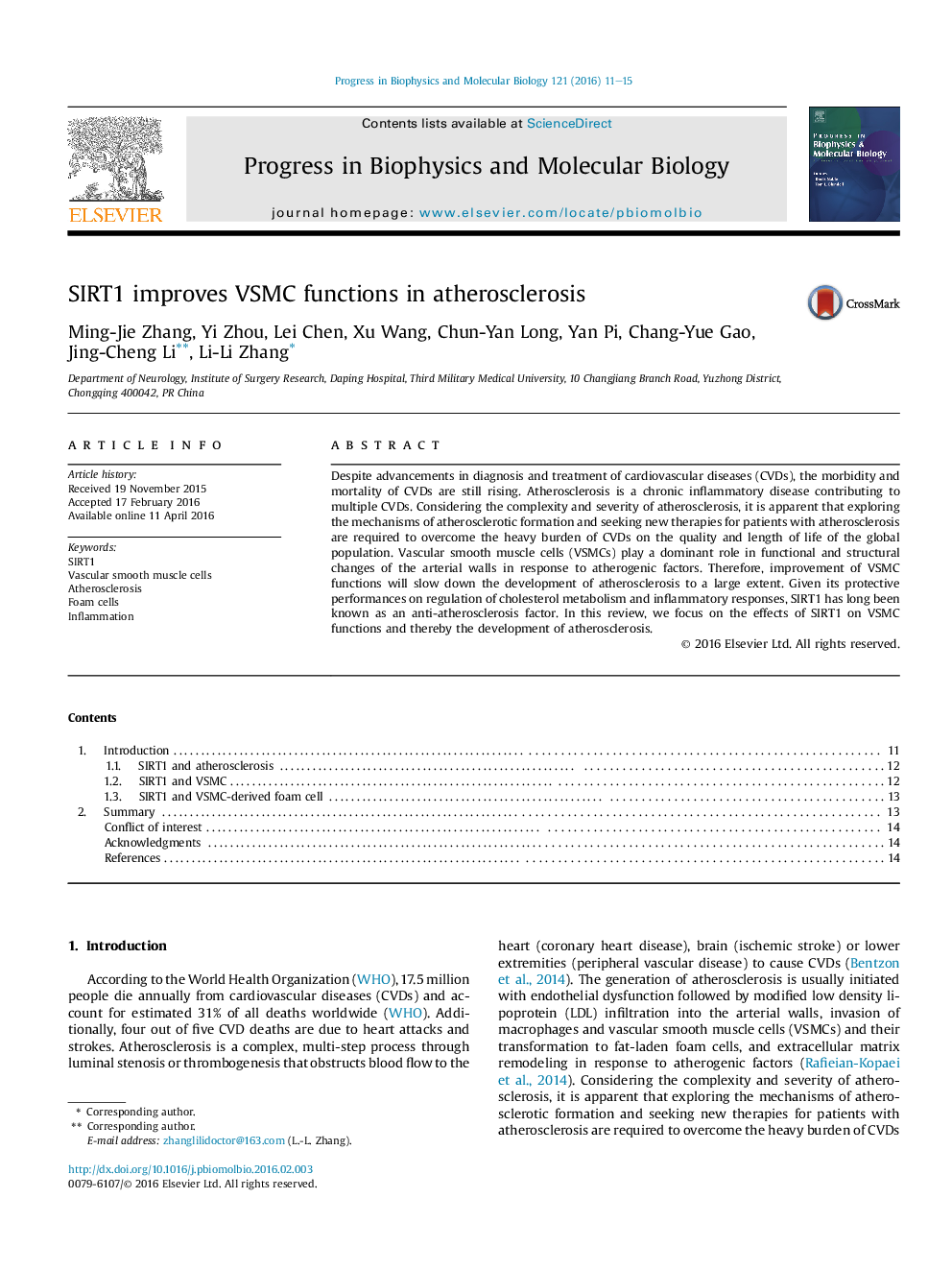| Article ID | Journal | Published Year | Pages | File Type |
|---|---|---|---|---|
| 2069986 | Progress in Biophysics and Molecular Biology | 2016 | 5 Pages |
•Exploring the mechanisms of atherosclerotic formation and seeking new therapies for atherosclerosis are needed.•VSMCs play a dominant role in functional and structural changes of the arterial walls in response to atherogenic factors.•SIRT1 has long been known as an anti-atherosclerosis factor.
Despite advancements in diagnosis and treatment of cardiovascular diseases (CVDs), the morbidity and mortality of CVDs are still rising. Atherosclerosis is a chronic inflammatory disease contributing to multiple CVDs. Considering the complexity and severity of atherosclerosis, it is apparent that exploring the mechanisms of atherosclerotic formation and seeking new therapies for patients with atherosclerosis are required to overcome the heavy burden of CVDs on the quality and length of life of the global population. Vascular smooth muscle cells (VSMCs) play a dominant role in functional and structural changes of the arterial walls in response to atherogenic factors. Therefore, improvement of VSMC functions will slow down the development of atherosclerosis to a large extent. Given its protective performances on regulation of cholesterol metabolism and inflammatory responses, SIRT1 has long been known as an anti-atherosclerosis factor. In this review, we focus on the effects of SIRT1 on VSMC functions and thereby the development of atherosclerosis.
